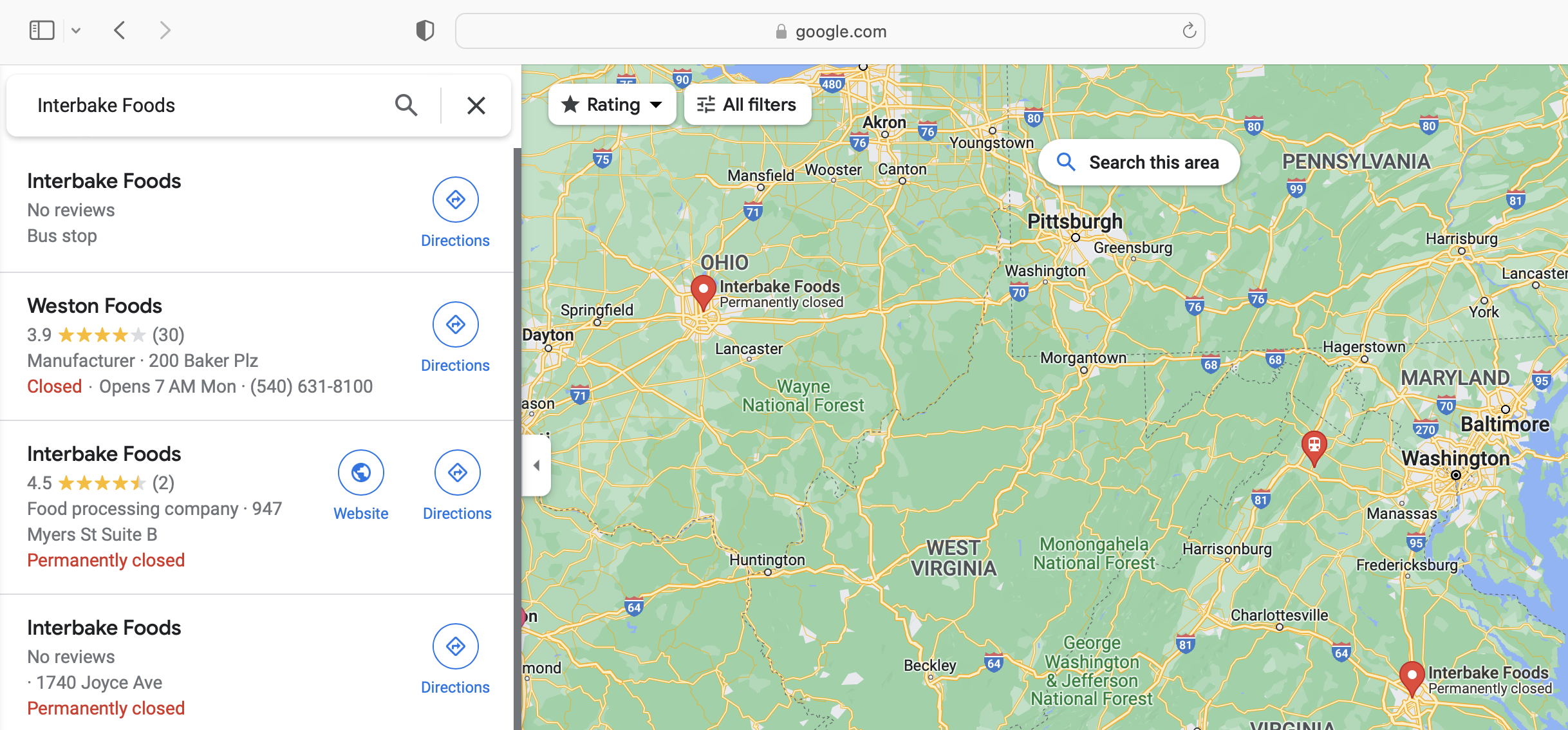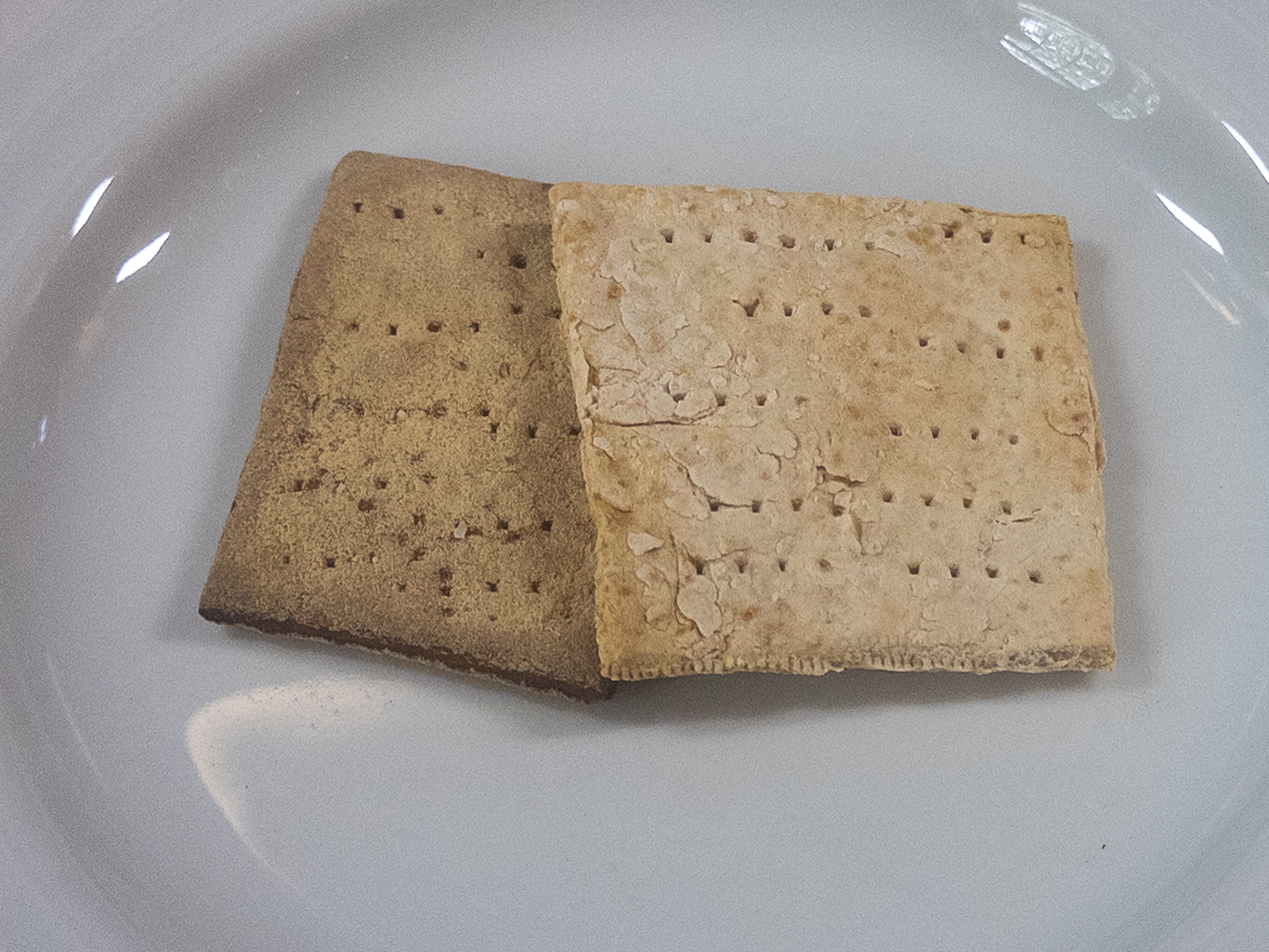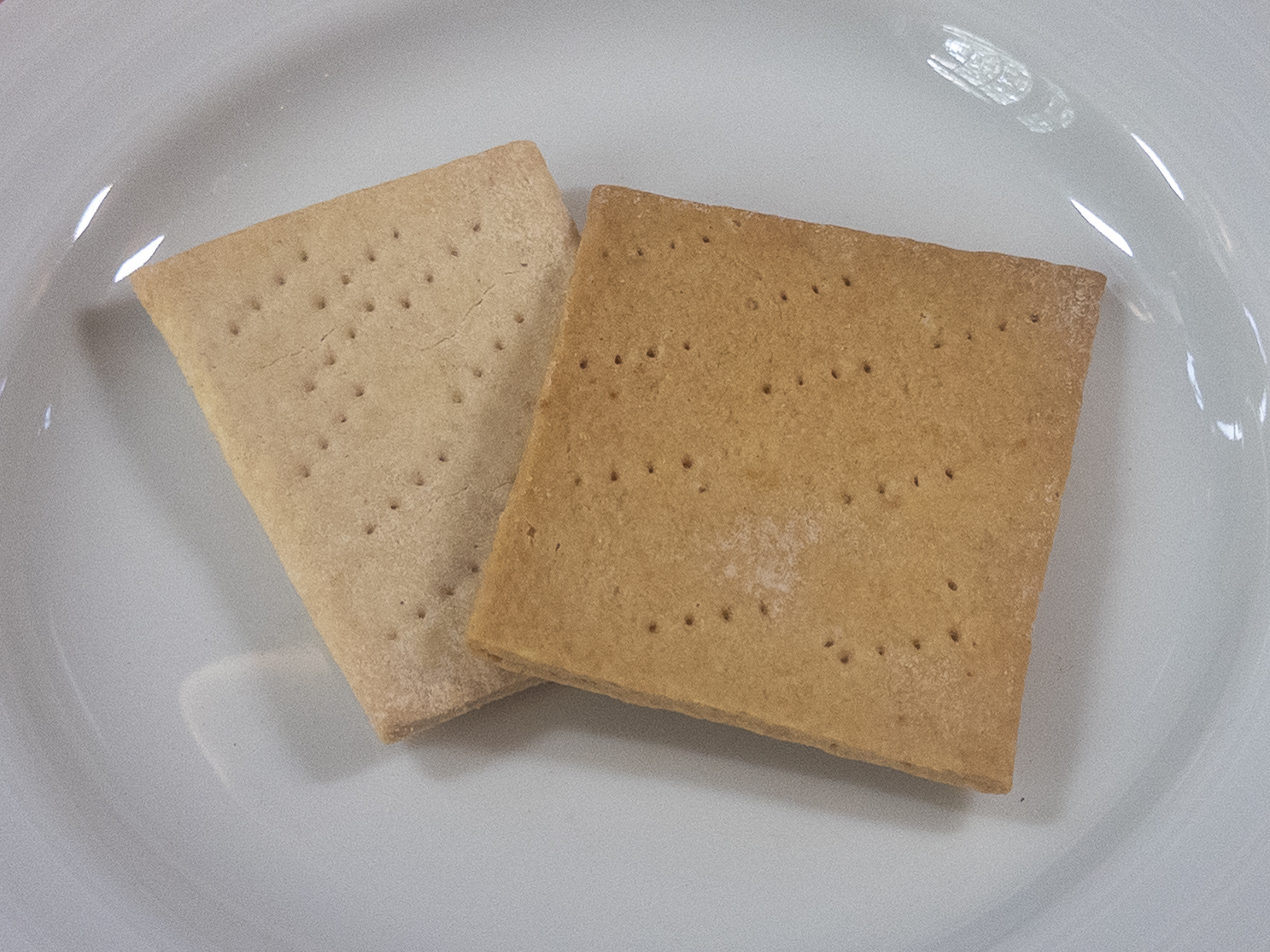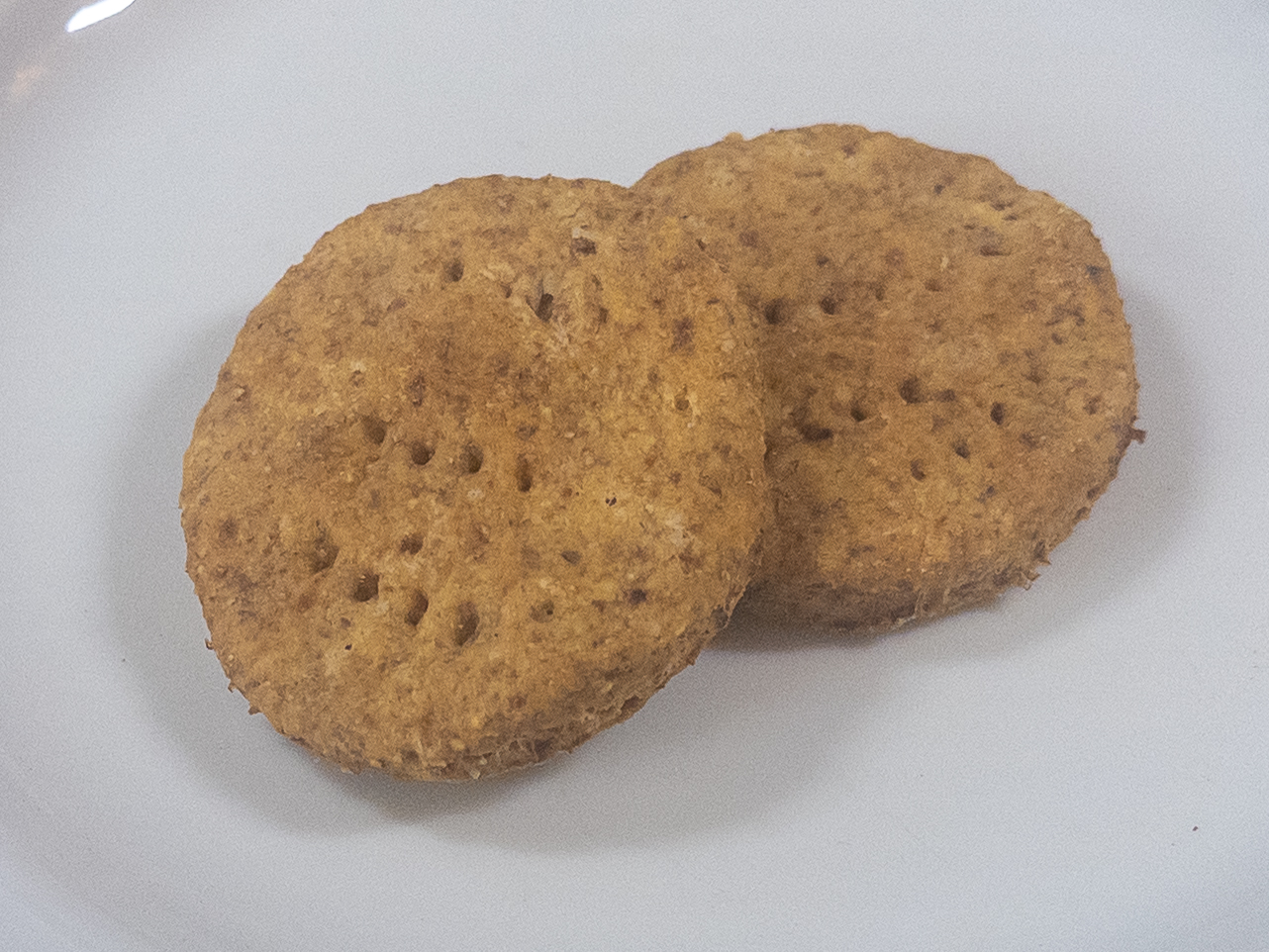As I mentioned in another post, I got a little obsessed with the idea of hard tack, and that led me to Sailor Boy Pilot Bread. This is a large dense cracker product beloved by the people of Alaska, and this is my review of it.
Unobtainium
These crackers are impossible to buy in Kentucky, but I suspect they’re hard to buy anywhere outside of Alaska. The manufacturer hasn’t responded to any emails, and the phone numbers I’ve been able to find are out of service. I’m guessing they just don’t have enough customer interaction to notice, or the several recent mergers/buyouts they seem to have been part of have left them busy with other stuff.
Fortunately I know someone in Alaska who generously sent me a box to try out. I worried – am I going to fall in love with these, and I’ll be bugging this poor person forever trying to get more?
A big, bland, crumbly cracker
Box says the company wants to hear from you, but provides no address/email/social media links.
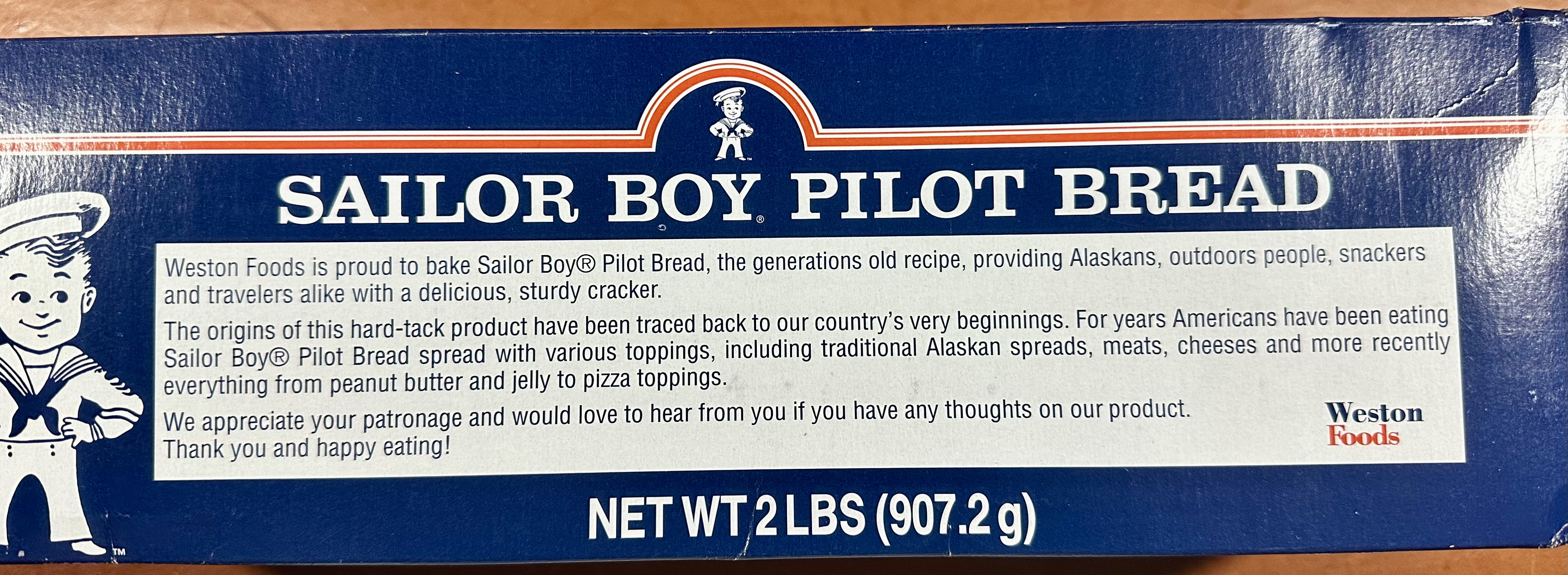
They are a smidge over 3.5” in diameter. A bit harder than a normal cracker, denser, just as flaky. The flavor is cracker. No salt. The kind of cracker that packs itself into mortar in every tooth crevice you have.
Last month I was sick, couldn’t keep anything down, and had to have something in my gut for a pain pill. These crackers worked just fine.
They are crumbly and are prone to shatter into bits. The crumbly aspect is kind of ironic given the threat of bears & leaving food out, etc. in bear country which as we all know, Alaska is. It’s probably no more crumbly than a regular saltine, but it’s like 10 times as big so it seem worse.
It’s easy to see this cracker being a carrier for just about anything including a not-to-small cooked hamburger patty. They’re big. So whatever you’re spreading had better be up to it. Boursin cheese has an entirely different economic impact when you’re putting it on one of these.
The kind soul who sent me a box responded “I don’t think you’ve ever had hard tack” when I questioned the wisdom of sending the crackers through the mail. Well, they are pretty sturdy, but they are a long way from being as hard as hard tack. While mine faired pretty well in shipping, Amazon reviews suggest most don’t – although they’re not available on Amazon anymore.
Road Test
We took them on a 2-week road trip to some national parks because surely that would be the ideal time for them. But no, they came home untouched. To be fair most of what we brought from home came home untouched. For whatever reason, we just didn’t use the pantry stuff we had, instead eating a lot of deli meat and pasta and tacos. Heck, even some of the chips we bought on the way ended up making it home. But I digress.
Independent snack food?
The lack of salt makes them a bit unappetizing by themselves and they really need a spread or something else to get your saliva glands going. I could see how the lack of salt could be why they work well as a bread substitute, but only for people who don’t have actual bread. Of course, why else would they need a bread substitute?
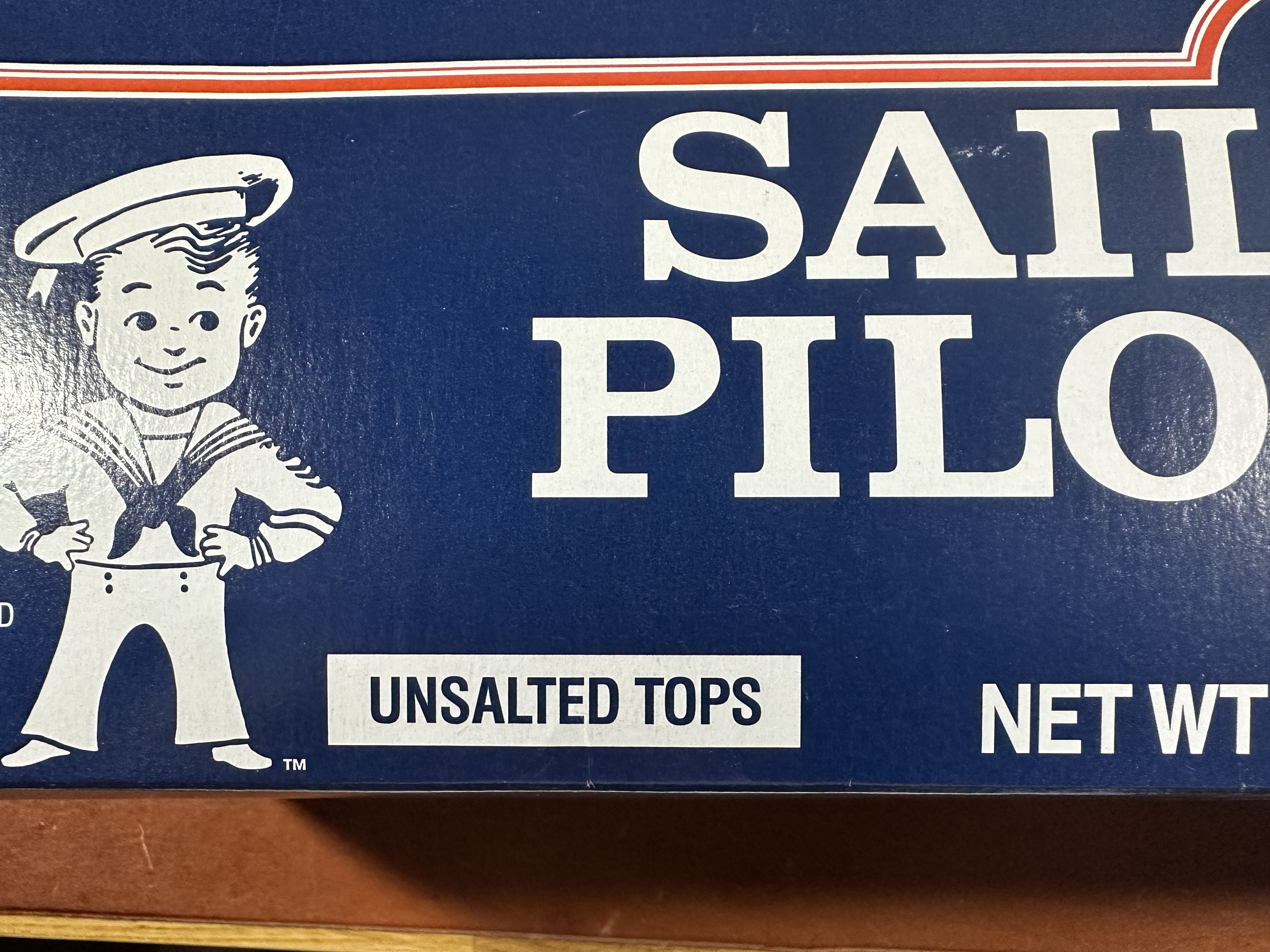
Their size puts them into a different category than regular crackers, more like sandwich size meals. So snacking probably means one or at most two crackers. You needn’t worry about having an open package nearby and absent-mindedly eating them all. If you got past two you’re probably need a nap. Snackccidents with these are unlikely.
Eating as the Alaskans do
Ok so if they’re not a snack cracker, what do you do with them?
According to web searches, you put stuff on them. I tried tuna salad (ok, really just tuna fish with mayo) on one and it was good. The cracker doesn’t bring much to the party but substrate and calories (they’re 90Kcal each) so really anything would work.
People make pizza using them, tostadas and lots of other things. As Littlehousebigalaska.com puts it “You can put anything ON it, and it just works.” They even mentioned toasting & buttering them, along with crumbling them into soup or stew. I’m thinking some cinnamon sugar, butter, and a brief visit to the oven/broiler to get caramelized could be quite nice.
I haven’t tried most of these, but I plan to. More to follow!



